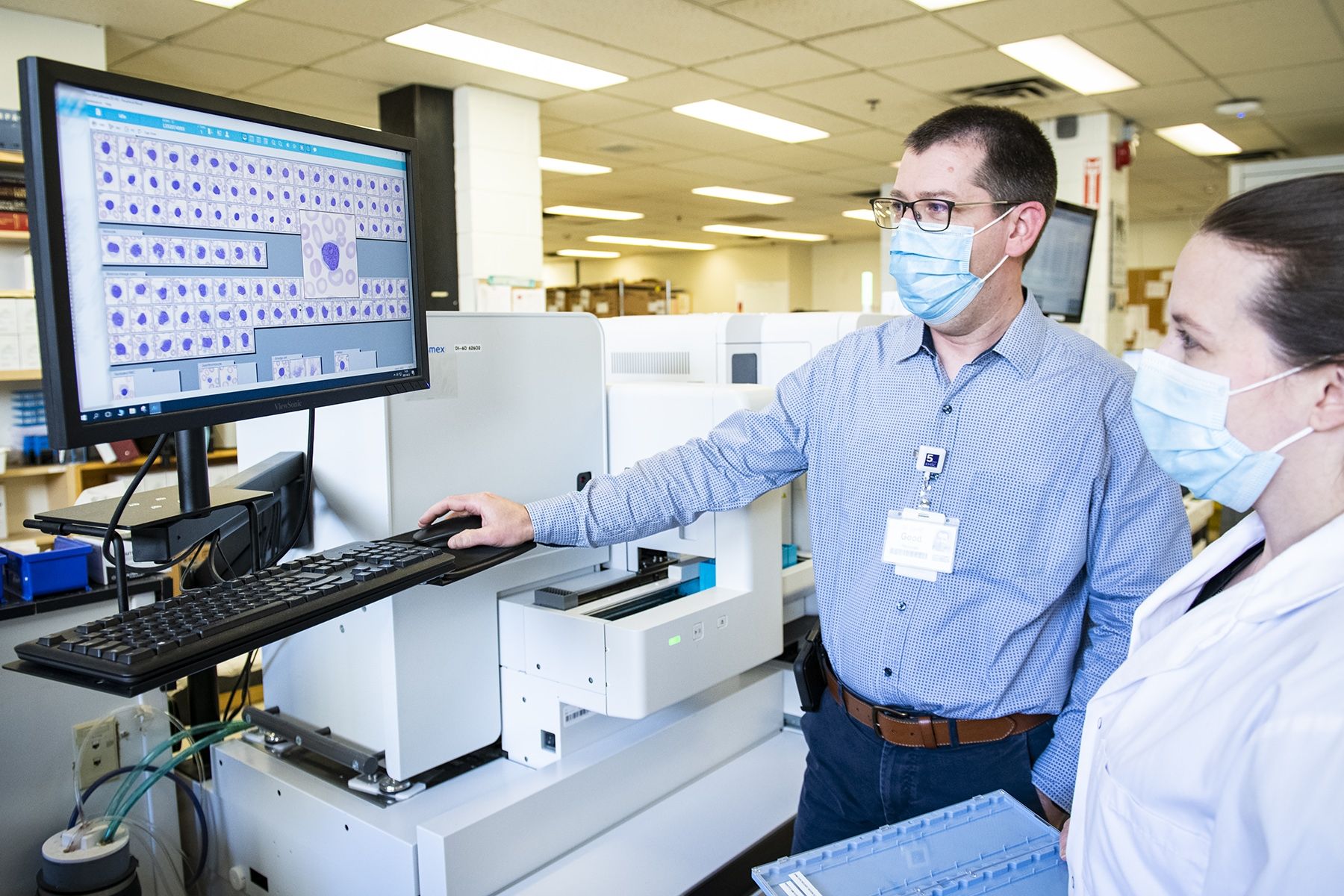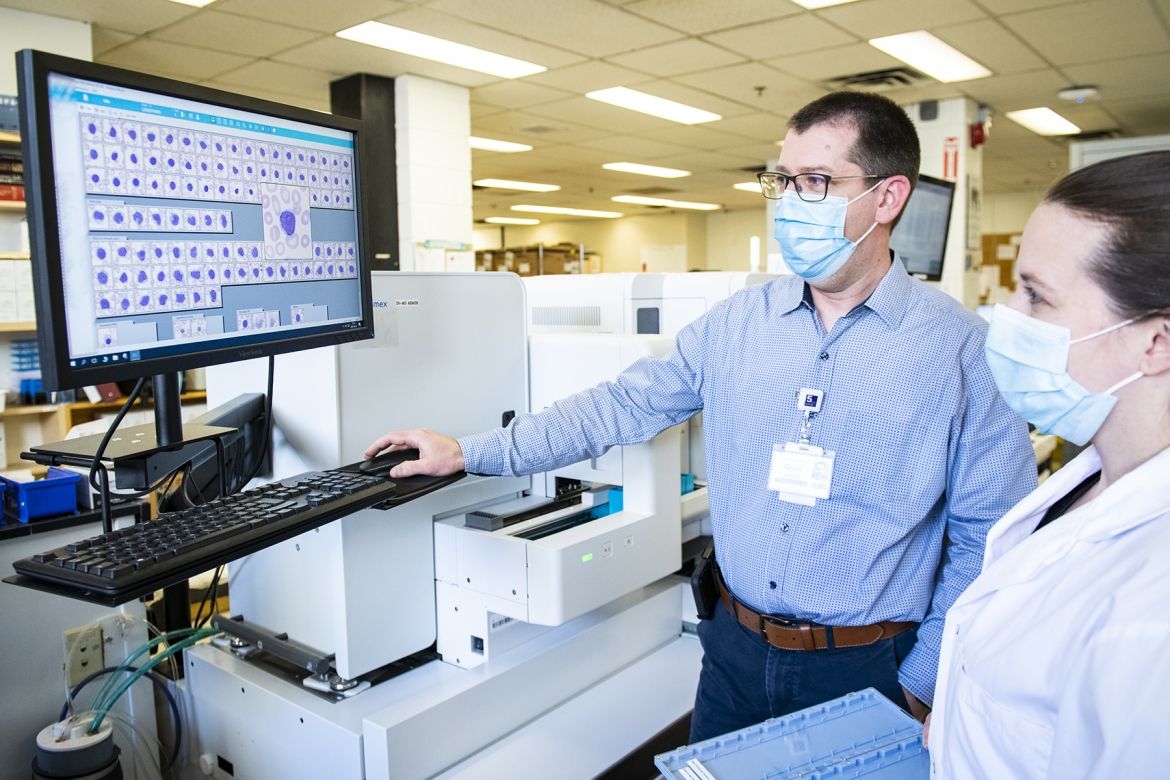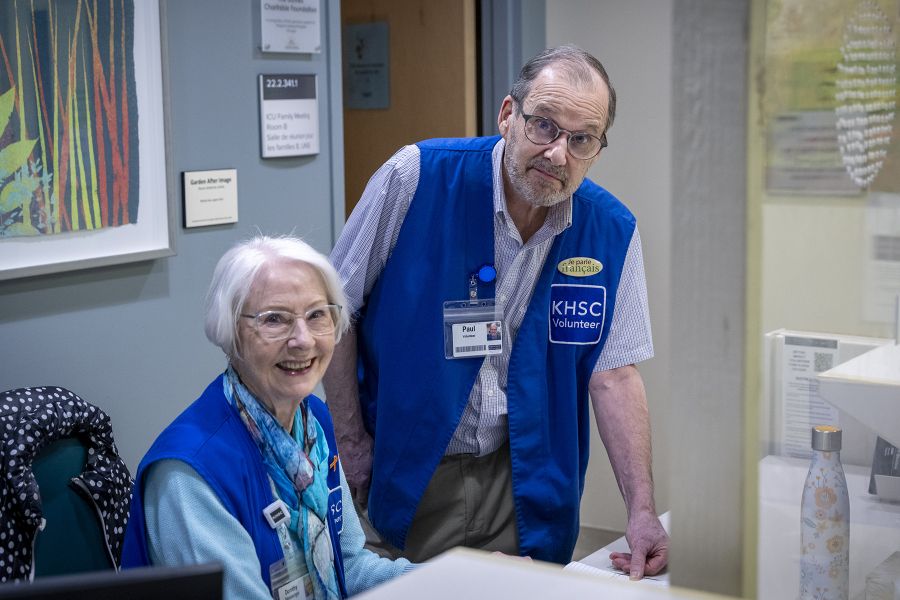Effective immediately masking is required for everyone when present on all inpatient units, in the Emergency Department (ED), the Urgent Care Centre (UCC), and the Children’s Outpatient Centre (COPC).

Thanks to over $300,000 in grant funding from Ontario Health, patients who present at hospitals across Southeastern Ontario will soon have access to faster blood test results. The funding has been used to purchase new digital morphology technology, which has now been installed in a number of hospitals across the region including in Brockville, Napanee, Perth and Smiths Falls.
When patients arrive in a hospital, one of the first laboratory tests that is usually ordered is a complete blood count (CBC). Traditionally, CBCs with abnormalities require a blood film to be made and viewed under a microscope by a medical laboratory technologist, who would visually identify which films require further review. The blood film slides are then couriered to Kingston to be reviewed by one of Kingston Health Sciences Centre’s (KHSC) hematopathologists.
“This new technology instead digitally scans the blood film and, uses software to identify and classify abnormal blood cells,” says Dr. David Good, Service Chief for Hematopathology at KHSC. “Labratory teams in smaller communities may not regularly see blood abnormalities such as aggressive lymphoma cells, malaria, or leukemia. By having this new technology support the identification of abnormal cells and offering the ability to access the images remotely, patients will receive quicker access to the care they need.”
“Timely identification of some of these hematological disorders is critical because some conditions, if caught early, can be easily treated.”
The KHSC team, with support from partners across the region have been working for the last four-to-five years to plan for and secure funding for this new technology. KHSC was able to install its own CBC analyzer with an integrated digital morphology system last year, while the Ontario Health grant made it possible to purchase and install smaller digital morphology analyzers in the other laboratories across the region over the last few months.
“While it may seem like a small feature, the ability for the other hospitals to quickly send a digital file of the lab results over a secure network to our teams in Kingston is another huge benefit for our patients. No longer do we need to courier actual slides from Perth to Kingston, for example, to be viewed under a microscope,” says Dr. Good. “Within moments we can now see the images on our computer and provide a diagnosis.”
As of March 31, all of the digital morphology analyzers were connected to upload images to a central server. Over the next few months, processes and procedures between the hospitals will be standardized before going live with the regional network.
“This work is a real testament to the dedication of health-care providers across Southeastern Ontario to introduce technology and improve care closer to home for everyone in the region,” says Dr. Good. “We can really work together and use technology to reach outside of our hospital’s walls and bring the expertise of our specialized teams in Kingston to every patient in this part of the province.”
Gallery


Dr. David Good reviews images using KHSC's new Complete Blood Count (CBC) analyzer with an integrated digital morphology system



